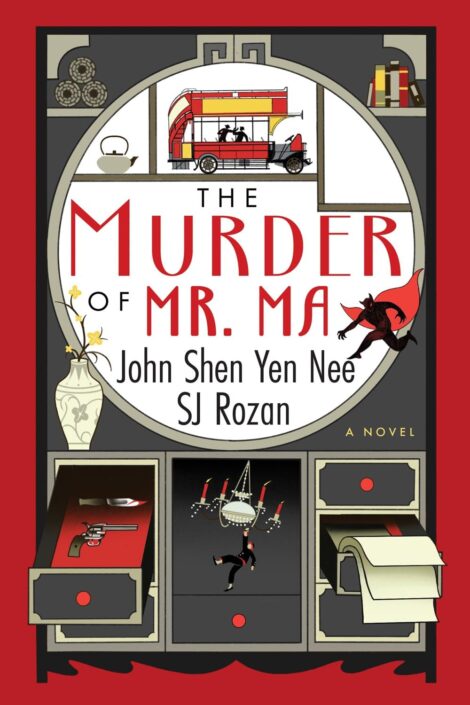
THE MURDER OF MR. MA
For fans of Guy Ritchie’s Sherlock Holmes films, this stunning, swashbuckling series opener by a powerhouse duo of authors is at once comfortingly familiar and tantalizingly new.
Two unlikely allies race through the cobbled streets of 1920s London in search of a killer targeting Chinese immigrants.
London, 1924. When shy academic Lao She meets larger-than-life Judge Dee Ren Jie, his quiet life abruptly turns from books and lectures to daring chases and narrow escapes. Dee has come to London to investigate the murder of a man he’d known during World War I when serving with the Chinese Labour Corps.
For fans of Guy Ritchie’s Sherlock Holmes films, this stunning, swashbuckling series opener by a powerhouse duo of authors is at once comfortingly familiar and tantalizingly new.
Two unlikely allies race through the cobbled streets of 1920s London in search of a killer targeting Chinese immigrants.
London, 1924. When shy academic Lao She meets larger-than-life Judge Dee Ren Jie, his quiet life abruptly turns from books and lectures to daring chases and narrow escapes. Dee has come to London to investigate the murder of a man he’d known during World War I when serving with the Chinese Labour Corps. No sooner has Dee interviewed the grieving widow than another dead body turns up. Then another. All stabbed to death with a butterfly sword. Will Dee and Lao be able to connect the threads of the murders—or are they next in line as victims?
Blending traditional gong’an crime fiction with the most iconic aspects of the Sherlock Holmes canon, Dee and Lao’s first adventure is as thrilling and visual as an action film, as imaginative and transportive as a timeless classic.
- Soho Crime
- Paperback
- March 2025
- 304 Pages
- 9781641296748
About Sj Rozan & John Shen Yen Nee
John Shen Yen Nee is a half Chinese, half Scottish American media executive, producer and entrepreneur who was born in Knoxville, grew up in San Diego, and is now based in Los Angeles, with a penchant for very long run-on sentences. He has served as president of WildStorm Productions; senior vice president of DC Comics; publisher of Marvel Comics; CEO of Cryptozoic Entertainment; and cofounder of CCG Labs. You can read more about him at www.johnnee.com.
SJ Rozan is the best-selling author of twenty novels and over eighty short stories, and editor of three anthologies. Her multiple awards include the Edgar, Shamus, Anthony, Nero, Macavity; Japanese Maltese Falcon; and the Private Eye Writers of America Lifetime Achievement Award. She’s served on the national boards of Mystery Writers of America and Sisters in Crime, and as president of Private Eye Writers of America. She was born in the Bronx and lives in Manhattan.
Praise
Shortlisted for the 2025 ALA Reading List for Mystery Fiction
NPR’s Books We Love 2024
Named a Best Mystery Book of the Year by Parade, Library Journal, and the South Florida Sun Sentinel
An Amazon Editors’ Pick for Best Mystery Book of the Month
“A glorious mash up of fan fiction (with tips of the hat to Robert van Gulik and Arthur Conan Doyle), kung fu prowess (Dee could easily star in a martial arts movie) and droll social commentary (‘The British,’ Dee remarks early on, ‘are oddly vulnerable to charm’).” —The New York Times Book Review
“The vivid action scenes feel as visceral as a Chow Yun-fat circular kick with double forearm strike. A sparkling and thought-provoking debut of a fresh dynamic duo whose adventures I’ll be eager to follow.” —Paula Woods, Los Angeles Times
“Co-authors Nee and Rozan offer an appealingly unusual, action-packed Sherlock Holmes pastiche with deep roots in both Chinese crime fiction and the history of early 20th-century England.” —The Washington Post
